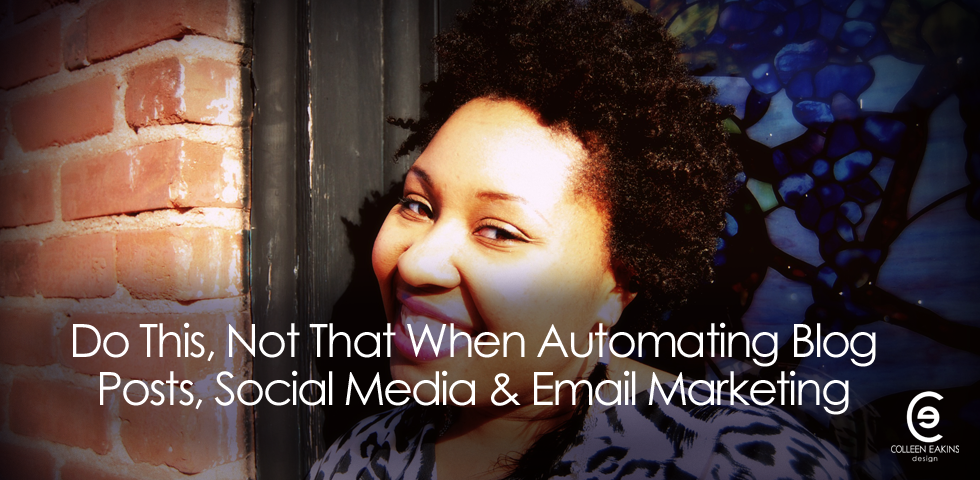Do This, Not That When Automating Blog Posts, Social Media and Email Marketing
One of the great digital marketing debates is on whether or not you should use automation. It has been debated ad nauseam and I am going to add my voice and opinion to the mix. As long as digital marketing strategies exist, this debate will continue to exist. I believe that to be true because a part of the advances in technology, have been to make life easier in some way. Automating tasks related to digital marketing strategies makes life easier.
I believe automation to be a great asset when used properly. The problem is that a lot of people do not use it properly and take a set it and forget it approach.
Automating Blog Postings
Why it’s Great: You can write at times when it is more convenient for you and schedule the blogs to post at times when it is more convenient for your audience. If you are the sole author of your blog or the content editor, scheduling blogs to posts allows you to go on vacation without missing a beat with your blog.
When it’s Bad: If the content you have previously scheduled to post becomes irrelevant prior to its post date, that would be bad. If you write tips on Google’s algorithm, set it to post 2 months in the future and Google releases an update a month prior; you will be disseminating bad information and risk looking like a non-authority on the topic.
Automating Social Media Postings
Why it’s Great: It’s a lot of work to find, read and share great content with your audience. Add to that the time it takes to monitor campaigns, respond to commenters and participate in discussions. It’s a lot of work and we have limited time. It’s the one thing we cannot create more of; we can only free some of it up by maximizing our productivity. Scheduling allows you to use time that might not be ideal to post, to find and craft your messages. You can then schedule them to go out when it is convenient for your audience.
When it’s Bad: Just like with blog postings, it is bad if you schedule more than you can remember, content wise. It is also bad if you only schedule and you are not monitoring and engaging with your audience. Periodically check to see what you have scheduled and review it. Not only will it help you remember what you have scheduled to go out, but it will also ensure that future postings are still relevant.
Automating Email Marketing
Why it’s Great: Many of the email marketing providers have ways that you can aggregate RSS feeds into your email campaigns. Do you post daily deals to your site? Use an RSS feed to trigger an email to go out with the information to your list. Using RSS feeds and scheduling emails to go out similar to what you do with blog postings can save you a ton of time.
When it’s Bad: Again, it’s just like blog postings and social media postings in that you do not want to set it and forget it. You need to review your reports to make sure that what you’re sending is something that your list wants to receive, open and read. If you are getting a lot of unsubscribes for a particular campaign, you need to review it. It does not make sense to keep auto-generating something that no one wants.
Did you notice a theme with when it’s bad? Setting it and forgetting about it. Use automation to plan ahead, increase your productivity and ease the strain of doing everything in real time. However, stay present and on top of what is going out. If you cannot keep up with and remember what you scheduled to go out 2 months ago, then you should not schedule that far out. You want to be able to engage with people through your digital channels. You can end up spending more time trying to remember or re-read something that is being commented on by your audience if you schedule too far out.
Colleen Eakins is a dynamic and creative individual that possess a knack for great design. With over 15 years of experience in the field of graphic design, Colleen is able to effectively brand her clients with great design pieces. Her motto is: “Anyone can make a pretty picture, but is it effective? Will it make your customer buy your product or use your services? My design tries to answer with a YES!”





